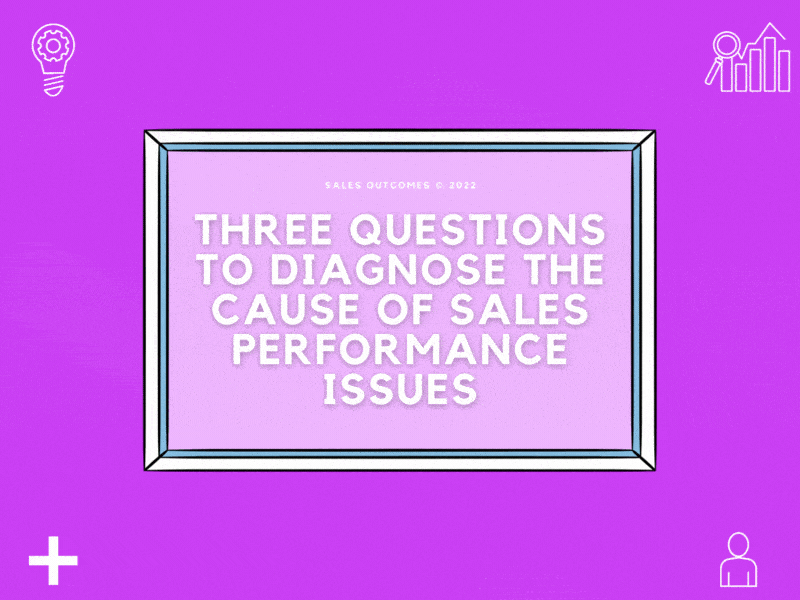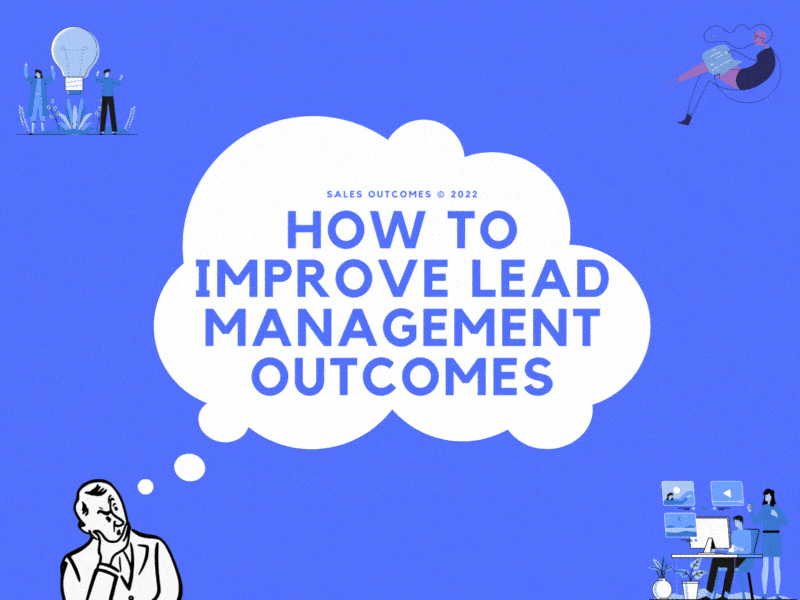Diagnosing Sales Performance Issues
For more Tips on Diagnosing Sales Performance Issues, Click Here to Subscribe to Two-Bullet-Tuesday
Diagnosing Sales Performance Issues:
“At the potter’s house, water is served in a broken jug” – Arabic proverb.
Tenured B2B sales professionals are trained to recognize gaps between a prospect’s or client’s desired state versus current state. Diagnosing the nature of sales performance issues and challenges is the first step to helping a client achieve their desired state.
Why is it when it comes to diagnosing internal sales performance issues, sales leaders often skip the diagnosing part and instead focus solely on what the results versus quota show at the end of the year?
Easy enough, right? If a person doesn’t make her/his number for the year, or x number of consecutive quarters, then it must be their fault?
The truth is that sales performance issues are typically attributed to one of three areas:

Diagnosing sales performance issues with three questions…
Question 1: Are the rights sales performance metrics tracked, visible, and managed?
If all you have is results, you only have lagging metrics. Lagging metrics are like looking at the scoreboard for the entire game while your team manages the game themselves. It would help if you also had leading and leaning metrics to provide insight far in advance of results. Sample metrics could include, number of proposals, average deal size, sales cycle length, number of demos or white-boarding sessions, and so on. Tracked, visible and managed, in that order.
Question 2: Are sales leaders spending a material portion of their time coaching?
If you answer is yes on this one, you’re probably mistaken, as most sales leaders don’t spend enough time coaching their people. For the record, spending time with salespeople is not the same as coaching salespeople. If you apply a typical sports coach example, 70% of coaching happens before the game, 10% during the game, and 20% after the game.
If your sales leaders manage eight or more salespeople, they are not spending enough of their time coaching. In our experience, the ideal sales rep to manager ratio is 5 to 1, or 6 to 1. If your sales leaders have never been coached to coach, then they may not be as effective coaches as they need to be.
Question 3: Has the salesperson been in their role for more than two years?
It takes time to develop sales competencies in B2B selling, particularly if you are hiring from outside the industry, or people early in career. By the end of year 2, new salespeople are no longer new and should be on track to hit their quarterly or annual goals.
Intuitive diagnosis is reliable when people have a lot of relevant feedback. But people are very often willing to make intuitive diagnoses even when they’re very likely to be wrong.
— Daniel Kahneman
Diagnosing and Fixing sales performance issues is simple but not easy.
The common denominator to improving sales performance is the front-line sales leader. If the right metrics, process, and coaching are not in place, you’ll find that new hires flush out quickly, and you will struggle to improve the performance of sales reps in the middle of the pack.
Apply the principles outlined in this post, and you’ll be able to diagnose the real issues to improve your organization’s sales performance.

